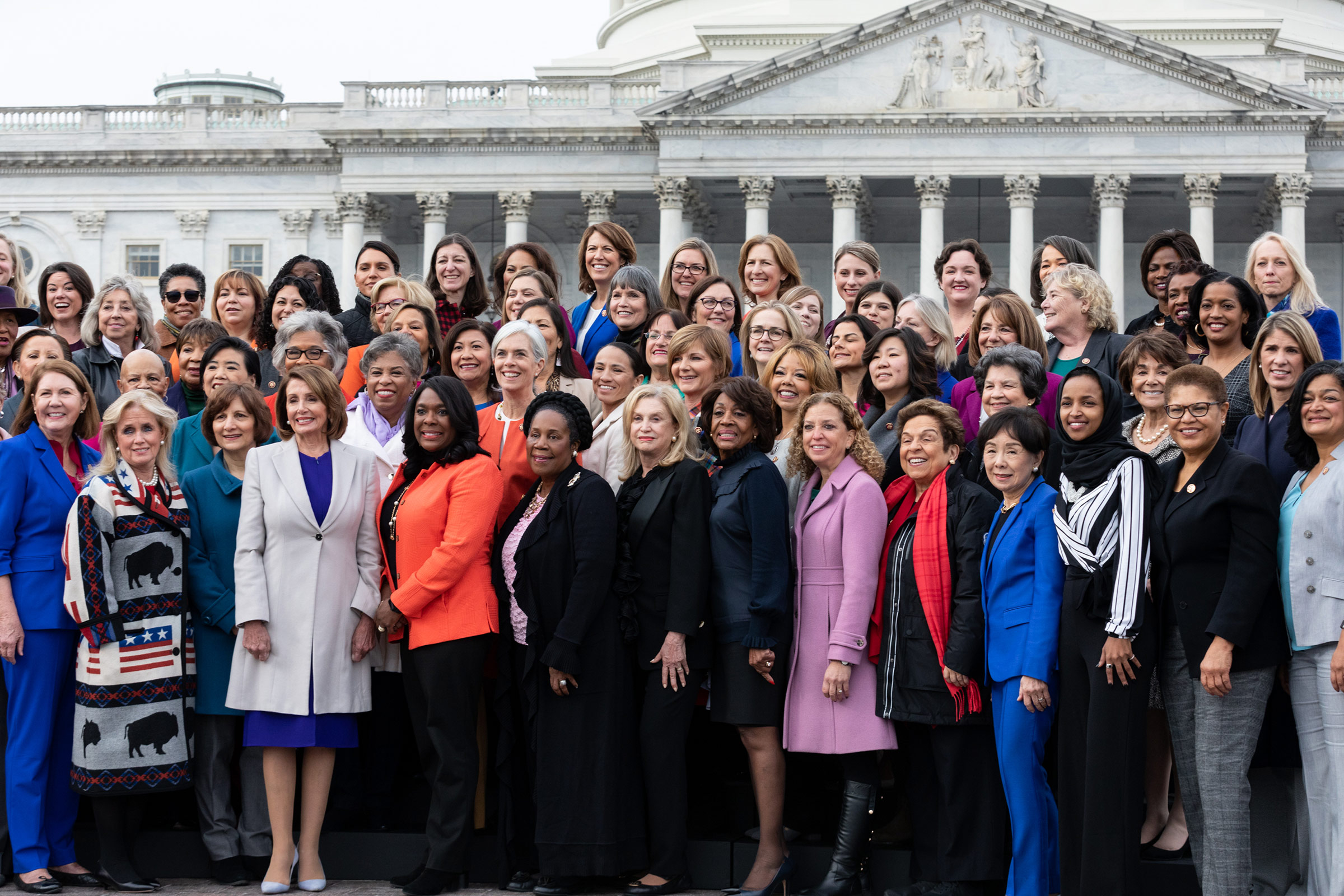
In February, Nevada became the first state in the country with a female-majority legislature. By June, with the help of the state’s Democratic governor, there were stronger laws ensuring equal pay for women, tougher penalties for domestic violence, better protection for sexual-assault survivors, more money for family-planning services, an end to a requirement that forced doctors to ask women their marital status before performing an abortion and an increased minimum wage. If anyone needed proof that having more female lawmakers benefits women, Nevada certainly makes a compelling case.
And yet female voters have often rejected the idea that women should vote with gender in mind. In 2016, Nancy Pelosi told Politico podcasters, “I don’t think that any woman should be asked to vote for someone because she’s a woman.” Of course it would be ridiculous to suggest that someone hop party lines to vote along gender ones, or support a candidate who fails to prioritize what she sees as a key issue. But in primaries where contenders have similar ideologies, there’s a strong argument to be made for backing a woman.
In their book Gendered Vulnerability: How Women Work Harder to Stay in Office, political scientists Jeffrey Lazarus and Amy Steigerwalt found that women in Congress are generally more effective than their male colleagues. They point to the fact that Congresswomen tend to have more staff in their district offices, serve on committees for issues that are of most interest to their constituents and are more likely to co-sponsor legislation that helps their voters. Separate research shows that female lawmakers bring more federal money back to their districts.
Women are more likely to run for elective office for the right reasons too. In her book Women Transforming Congress, political science professor Cindy Simon Rosenthal describes surveying lawmakers about why they got into politics. Most male legislators said it was something they’d always wanted to do. Female legislators, on the other hand, said they hoped to create social change and become more involved in their communities. In many instances, men run for office to be something while women run to do something.
Perhaps most significant, female lawmakers better represent women’s interests, pushing laws in areas frequently prioritized by female voters, including health care, civil rights and issues affecting families. One major roadblock in getting such legislation passed, however, could be that there simply aren’t enough women in office to usher it through; a 2018 Political Science Research and Methods study found that women’s proposals “are systematically dismissed and disregarded throughout the legislative process, relative to those of men.” It’s impossible to say for sure whether equal representation would change that–women still make up only about a quarter of Congress and 29% of state legislatures–but it’s reasonable to conclude that without more women in office, the issues women care about most will continue to be brushed aside.
Here’s what we do know: white men account for about a third of the U.S. population but dominate our political system. It’s not because they’re more “authentic” or “electable” or any of the other vague terms thrown around when candidates are discussed, but rather because white men run for office more than anyone else. In the 2018 election cycle, women and people of color were just as likely as white men to win their races once they were on the ballot, according to a report by the Reflective Democracy Campaign. And with Democratic women running in record numbers, it was women–and, importantly, diverse women–who flipped the House from red to blue.
Imagine, in Washington and in state legislatures across the country, women being represented by people who innately understand their experiences because they have lived them. The only way to get there is to vote more women into office–and not only that, but women of color; LGBTQ women; immigrant women; women with young kids; women with no kids; women from different economic, religious and ethnic backgrounds. There are gains even in the trying. Having multiple women in the 2020 Democratic presidential primary has already changed the discourse of the election. In the first two debates, candidates talked about abortion access, the Equal Rights Amendment and the wage gap–with women onstage addressing those issues, the men have been forced to do so as well. The female candidates have also led the way on proposals for paid leave and affordable-child-care policies.
So go ahead, vote for her–and her, and her, and her–right down the ballot. If someone asks why, don’t hesitate to give the short answer: Because she’s a woman. It’s as good a reason as any.
Moscatello is the author of See Jane Win: The Inspiring Story of the Women Changing American Politics
More Must-Reads from TIME
- Donald Trump Is TIME's 2024 Person of the Year
- TIME’s Top 10 Photos of 2024
- Why Gen Z Is Drinking Less
- The Best Movies About Cooking
- Why Is Anxiety Worse at Night?
- A Head-to-Toe Guide to Treating Dry Skin
- Why Street Cats Are Taking Over Urban Neighborhoods
- Column: Jimmy Carter’s Global Legacy Was Moral Clarity
Contact us at letters@time.com